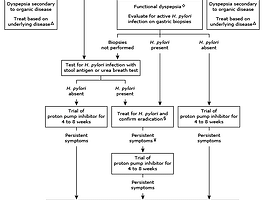20대 환자가 내원하였습니다. 오래 전부터 변비가 있었고 아주 간혹 설사가 있기는 하였지만 거의 변비가 있었다고 하였습니다. 복통은 없는 편이고 따라서 배변에 따른 복통 호전은 가늠하기 어려웠으며 배변과 관련된 증상 호전은 평가하기 어려웠습니다.
'오래 전부터 과민성 대장 증후군 진단을 받았고 약을 복용해 왔어요'
복통도 아니고, 배변과 관련하여 호전되는 복통도 아니고, 그렇다고 변 성상이 변비로 되는 것도 아니고.........그냥 처음부터 끝까지 거의 변비인........그래서 만성 변비 같은데 환자는 과민성 대장 증후군이라고 알고 있으니...
환자들은 처음 진단받은 진단명에 각인되어 있는 것 같습니다.
'저는 환자분이 과민성 대장 증후군보다는 만성 변비라고 생각합니다'
Chronic consipation
These observations have led to the use of more expansive criteria of functional constipation. An international working committee recommended diagnostic criteria (Rome IV) for functional constipation. The diagnosis should be based upon the presence of the following for at least three months (with symptom onset at least six months prior to diagnosis).
(1) Must include two or more of the following:
● Straining during more than 25 percent of defecations.
● Lumpy or hard stools (Bristol Stool Scale Form 1-2) in more than 25 percent of defecations.
● Sensation of incomplete evacuation for more than 25 percent of defecations.
● Sensation of anorectal obstruction/blockage for more than 25 percent of defecations.
● Manual maneuvers to facilitate more than 25 percent of defecations (eg, digital evacuation, support of the pelvic floor).
● Fewer than three spontaneous bowel movements per week.
(2) Loose stools are rarely present without the use of laxatives
(3) There are insufficient criteria for IBS.
Rome IV criteria for IBS
According to the Rome IV criteria, IBS is defined as recurrent abdominal pain, on average, at least one day per week in the last three months, associated with two or more of the following criteria:
• Related to defecation
• Associated with a change in stool frequency
• Associated with a change in stool form (appearance)
● IBS subtypes – Subtypes of IBS are recognized based on the patient's reported predominant bowel habit on days with abnormal bowel movements. The Bristol stool form scale (BSFS) should be used to record stool consistency. Subtypes can only confidently be established when the patient is evaluated off medications used to treat bowel habit abnormalities. IBS subtypes are defined for clinical practice as follows:
• IBS with predominant constipation – Patient reports that abnormal bowel movements are usually constipation (type 1 and 2 in the BSFS)
• IBS with predominant diarrhea – Patient reports that abnormal bowel movements are usually diarrhea (type 6 and 7 in the BSFS)
• IBS with mixed bowel habits – Patient reports that abnormal bowel movements are usually both constipation and diarrhea (more than one-fourth of all the abnormal bowel movements were constipation and more than one-fourth were diarrhea)
• IBS unclassified – Patients who meet diagnostic criteria for IBS but cannot be accurately categorized into one of the other three subtypes.
● Other criteria – The Manning criteria include relief of pain with bowel movements, looser and more frequent stools with onset of pain, passage of mucus, and a sense of incomplete emptying. There have been conflicting data regarding the predictive ability of the Manning criteria. The Kruis criteria are less frequently used in clinical practice. A number of studies have assessed the accuracy of the Rome and Manning criteria in a variety of practice settings. As a result, some investigators continue to use the Manning criteria or a combination of both. No symptom-based criteria have ideal accuracy for diagnosing IBS; however, the Manning and Kruis criteria perform at least as well as the Rome I criteria
Manning criteria for the diagnosis of irritable bowel syndrome*
|
Pain relieved with defecation |
|
More frequent stools at the onset of pain |
|
Looser stools at the onset of pain |
|
Visible abdominal distention |
|
Passage of mucus |
|
Sensation of incomplete evacuation |
* The likelihood of irritable bowel syndrome is proportional to the number of Manning criteria that are present.
'소화기내과(위장관) > 기능적질환' 카테고리의 다른 글
| Functional dyspepsia, buspirone, 기능성 소화불량, 부스피론 (0) | 2020.03.29 |
|---|---|
| 기능성 소화불량, Functional dyspepsia (0) | 2020.03.29 |
| 만성 기능성 변비의 진단과 치료 임상 진료지침 개정안 2015 (0) | 2019.12.26 |
| 프루칼로프라이드(레졸로, prucalopride, resolor) 이상반응과 급성 세뇨관 괴사, Adverse reactions and ATN of prucalopride (0) | 2019.12.23 |
| 과민성 대장 증후군에서 사용되는 비약물 치료의 증거의 질, Quality of evidence of nonpharmacologic Interventions for IBS (0) | 2019.12.22 |



